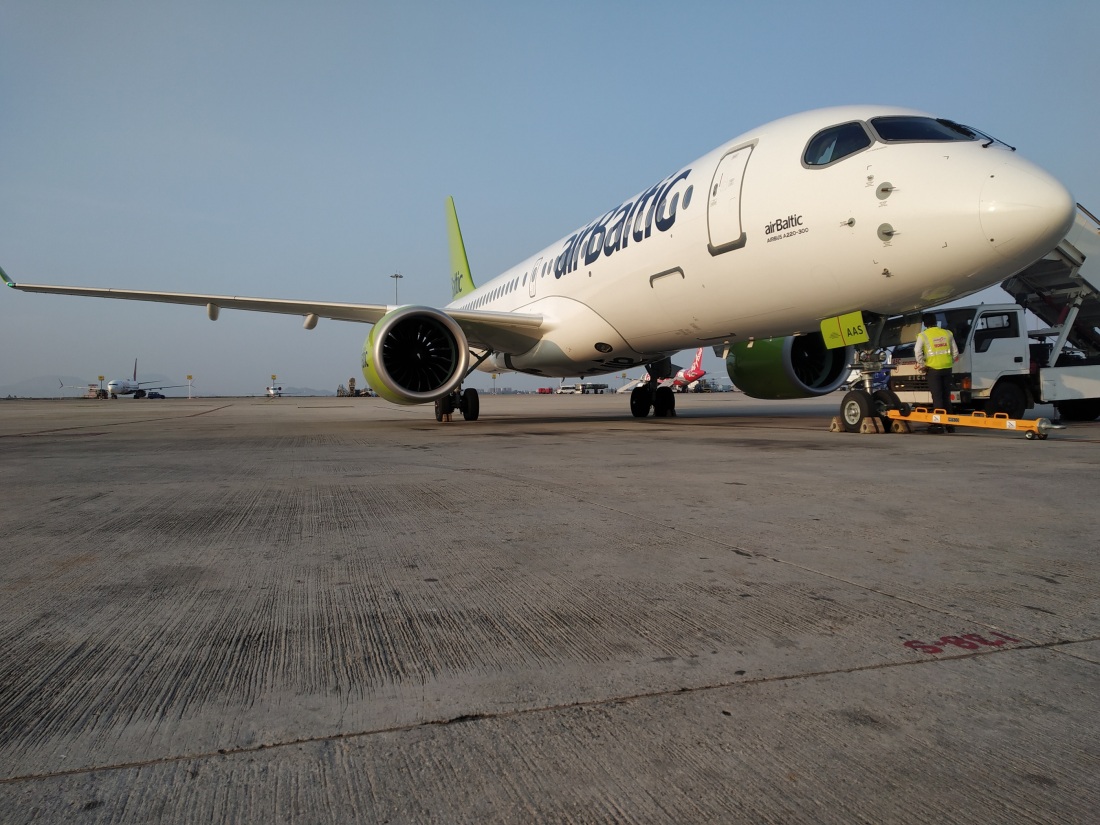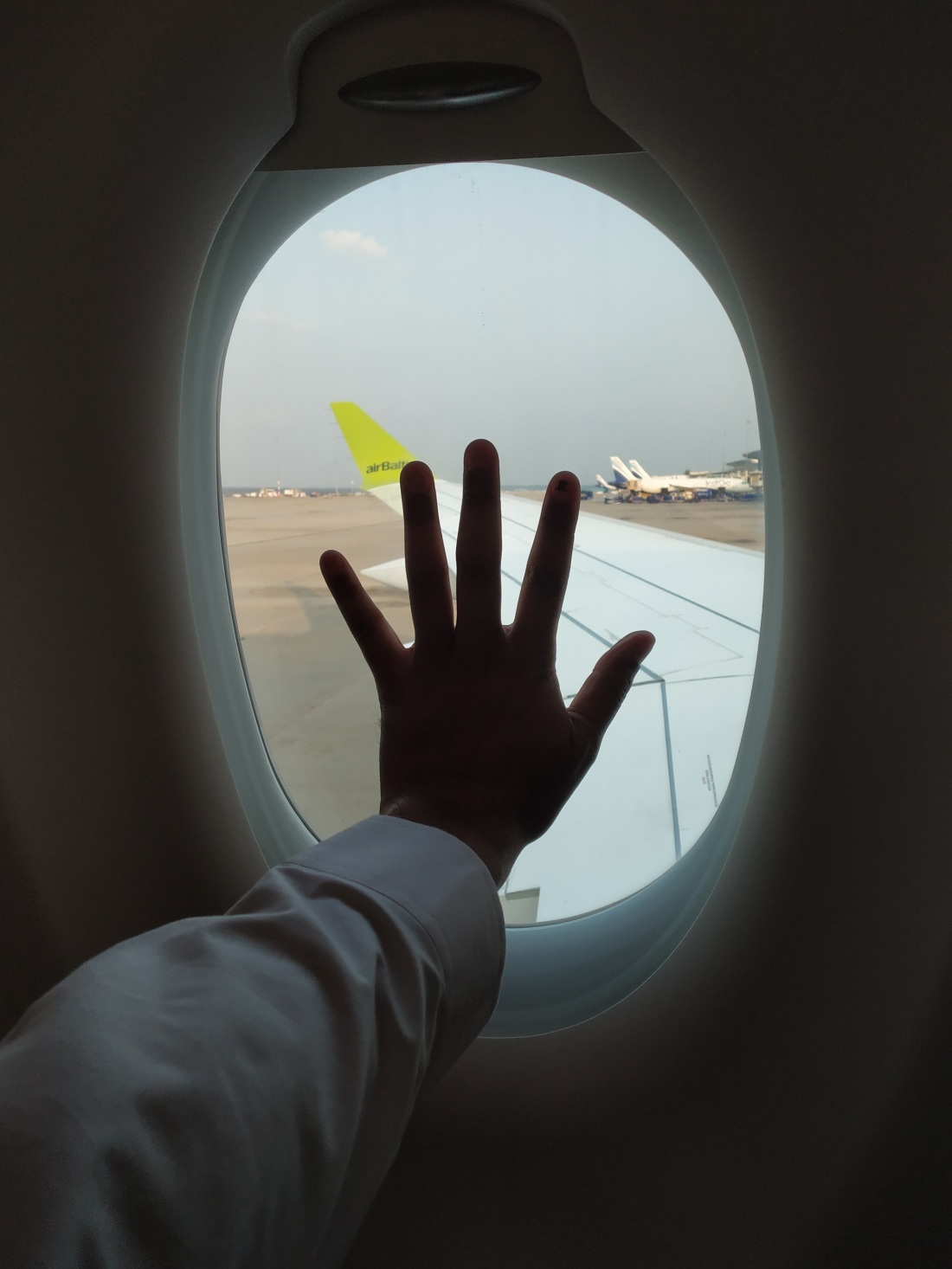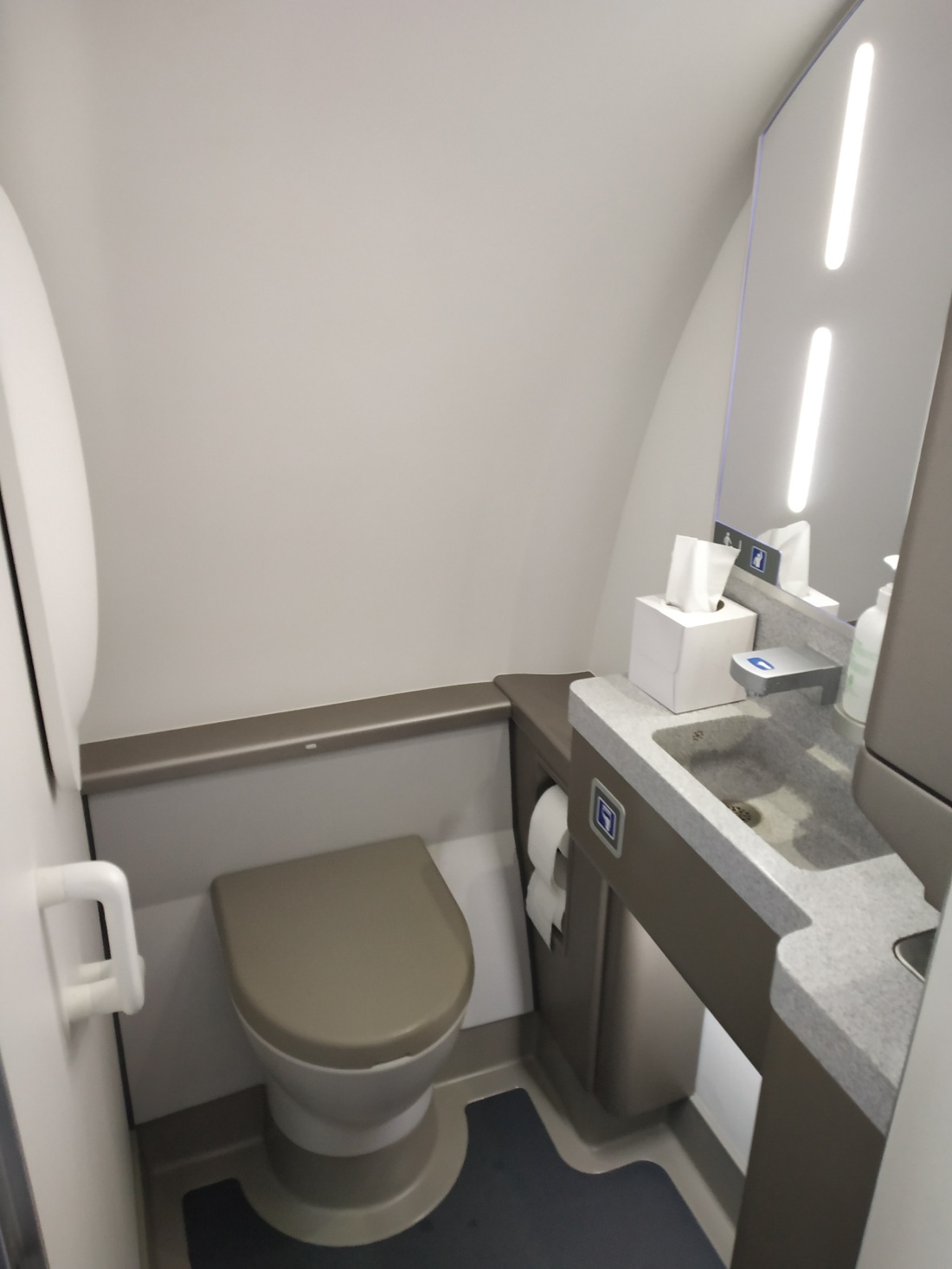I am a big fan of the regional jets. Having studied them first in 2011 and being convinced about the capability, I have kept track of the market, development and possibilities. In the last eight years and since I first wrote an article on Regional Jets in India – one of the most read and searched articles online, a lot has changed in this space. From being regional, the next generations of airliners are widening their scope and range.
Last month, Airbus announced its A220-300 tour of Asia. An Air Baltic A220-300 would do the honors for the demo tour and I was invited by the Airbus team to fly the aircraft from Bengaluru to New Delhi on 11th November 2019.
After missing the A220 (then the C series) in 2017, I recently flew the A220-100 from Nice to Geneva. This would be my first flight on the A220-300, second on the A220 series and third flight with Air Baltic – having flown the Q400 and B733 before.

To know more about the A220 and its increased range, a previous Network Thoughts article can be useful – Airbus increases range of A220; what it means for India?
A220 history
The Airbus A220 program has an interesting history. The aircraft was originally designed and manufactured by Bombardier in Canada and was running out of steam when Airbus took over and renamed it. Airbus has since developed another line at its USA plant, in addition to the first production line in Canada.
The aircraft is exclusively powered by Pratt & Whitney PW1500G GTF engines, similar technology like those on the A320neo of IndiGo and GoAir. The aircraft entered commercial service in 2016 with the smaller A220-100 with Swiss and the larger A220-300 with Air Baltic.
Day of departure
On the day of departure, my flight into Bengaluru was diverted to Hyderabad due to bad weather and I was lucky to have made it back in time for the flight. A sumptuous lunch spread awaited at Taj Bengaluru where some details about the flight and current Asia tour was shared with a select group. Simultaneously – another group was at the airport visiting the aircraft and in a demo flight.
It was time to mingle with fellow passengers on the flight – a set of aviation geeks and track the demo flight which was in the skies at that time. The call sign today was BT9802 and the aircraft YL-AAS which was delivered to Air Baltic in May. Air India was the ground handler for this non-scheduled flight and that meant that the boarding pass for the select group of people were pre-printed and handed over at the terminal entrance. A separate queue for security which had the passenger manifest with the security team ticking off against the names of passengers as they crossed security and we were in the security hold area, waiting for boarding.
The coach got us to the aircraft and the A220-300 in Air Baltic livery looked stunning against the setting sun on the apron at Bengaluru Airport. The sun kept playing spoilsport in getting some good pictures but that did not stop me from doing a quick walk around to see the aircraft. The Airbus team had some spare safety jackets which facilitated the walk around. It was time to board – the flight today had handful of invitees, teams from Airbus and Air Baltic – which meant there was ample choice to select seats.

The A220 is configured with 5 abreast seats in 2 x 3 seating, with Air Baltic seats being 19 inch wide, an inch more than the standard Airbus 18 inch philosophy. The team from Airbus and Air Baltic were around to explain the features of the aircraft and I thoroughly enjoyed taking a tour of the aircraft seeing the galley, lavatories and understanding the cargo bay loading – a big shift from the last regional jet which Bombardier designed, the CRJs!

The cabin, smelling fresh, is wide with the cabin luggage bins being like those on the Boeing Sky Interior B737s or the B737 MAX series. However, while the bins are huge and easy to place luggage in, during my flight with Swiss or now – I realized that the bin drops far too low making it difficult for the passengers to get up – more so from the window seat on the right – where three passengers are seated.

Next stop – cockpit! To understand the display and functionalities and understand the change from older generation. The glass cockpit is very roomy the digital displays kept me glued to them for most part of the visit. A picture with the Bengaluru control tower before stepping out and visiting the galley. It was time to settle down as we were all set for push back.

All buckled up, the cabin crew went around checking for any bags which were not stowed properly. Air Baltic also has mini screens overhead and the classy Air Baltic safety demo started no sooner than we pushed back. Another interesting thing was seeing the step ladder attached and door opened post push back. This was because this being a demo flight, the aircraft carries its tow bar along and it had to be loaded back into the hold and the engineering team of Air Baltic boarded post this.

I was gazing out of the large windows as the aircraft taxied to runway 09 and made a powerful take-off towards the East before setting course for New Delhi. As the seat belts sign switched off, it was time to experience and explore the aircraft in detail. I had occupied the row behind the emergency exit since the emergency exit had a relatively smaller window. I am not a big fan of 2 x 3 seating and I have been on a few such flights, so I was keen to experience the middle seat.The Air Baltic A220-300 has a 30-inch pitch, which is average and was comfortable for the 2hour 20min hop to Delhi.

The next thing to do was check the noise and turns out it was close to 70 decibels. It was time to interact with Mr. Connor Buott – to understand how the aircraft is being pitched to airlines and know more about the A220. The A220 has seen renewed success post acquisition of the program by Airbus from Bombardier. A lot of things have gone in favor of the A220 since then and some of this includes having a large sales network behind the plane. Yet, the A220 is not and will most probably be never integrated with the A320family.

It was time for meals and the Air Baltic crew efficiently distributed a cold drink, water and a choice of veg or non-veg meals. Dinner done, it was time to head to the aisle again to see the galley, mood lighting and the lavatories – there are two of them. For its range, may be this will be a tight spot!
Soon, it was time to land and I settled back on my seat making notes of multiple things from the aircraft. We touched down on runway 29 and taxied to our designated parking spot near T2. It was time for one last picture of the aircraft before thanking the Airbus team and being bussed to the arrivals at Terminal 3.

As for global operations, Air Baltic has done well by replacing their B733s and B735s with the A220-300 and these are really older aircraft in the same seat segment which results in immense positive swing in economics but not so for an airline which already operates latest generation jets – like those in India.
When looked purely at CASK level, it will be difficult to justify the aircraft in this segment but when looked holistically with some intense crunching and balancing with scheduling – it would make sense to have a fleet of a smaller jet like the A220 and complement it with the highest capacity single-aisle jets like the A321/B737 MAX9 to have a network where right aircraft can help make money. Will that happen in Indian market? Difficult, for a market which is purely focused on lowest costs – at least now.
There are some more pictures which can be seen on Instagram
I was invited by Airbus for the event.




Can you put a series of blogs on emerging technologies in the airport management and show India is performing with respect to some of the best in the world.
LikeLike